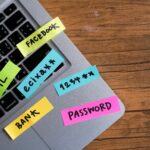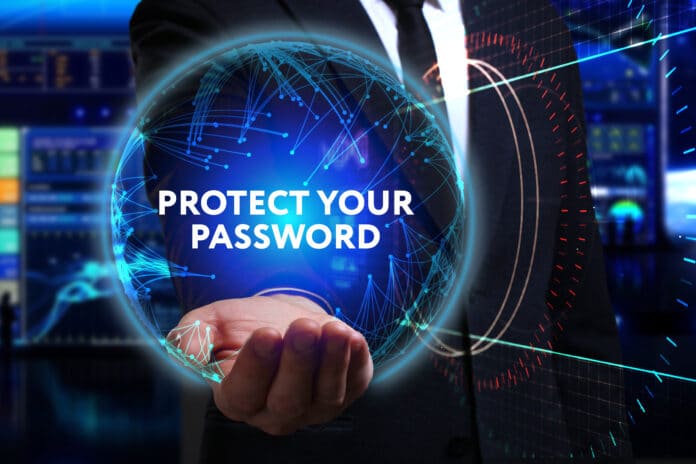Passwords have remained the most critical access control over users’ data and applications for decades and show no sign of going away anytime soon. A user’s password is the doorway through which they enter their online lives and applications, hence becoming the primary target for attackers. Along with the risk of cybercrime, users also have to juggle remembering complex passwords for numerous applications, which can become very difficult over time. This article will review essential password management techniques that users can apply to manage their passwords securely and conveniently.
Laying the foundation – Strong passwords
Choosing strong passwords is a statement that every single online user has heard at one time or another, yet it is still something that is often neglected until a breach happens. A strong password lays the foundation for an overall strong security foundation and is something that should never be neglected.
There is a reason that the following principles have stood the test of time:
- Ensure the password has an appropriate length and complexity with a combination of lower, uppercase characters, numbers, symbols, etc.
- Avoiding common words and phrases that can easily be brute forced by attackers
- Avoiding passwords creates information that can easily be gleaned from your public profiles, like the date of birth, name, address, etc.
- Using passphrases that are easier to remember and yet much more difficult to guess
- Avoiding reuse of passwords as that exponentially increases the blast radius of an attack if your password gets breached.
Leveraging tools and technology
As mentioned earlier, managing passwords across applications can be a logistical nightmare leading to users choosing easy passwords, reusing them, or writing them down for easy access.
Thankfully there are numerous tools and technologies available that can mitigate these risks.
But before using these tools, it is essential to remember that not all passwords are created equal. It is important to list and categorize the accounts you use to immediately focus on the most sensitive ones and move to the less critical ones over time.
Some of the essential tools and tips that can be used are:
- Password Managers can be used to store your passwords in one place securely. Tools like LastPass can handle the overhead of creating and managing different, unique passwords from a central location. These tools can also fill them out automatically when users access their applications, thus removing the difficulty of password management.
- Enabling multi-factor authentication is a simple but effective way to strengthen your password footprint further. This additional layer of security can stop an attacker in their tracks even if your password is compromised. Most online applications and platforms support MFA, so enabling this should be a top priority.
- Establish a routine for changing passwords. Mark a date in your calendar for when you will change the passwords for your critical accounts. It is easy to keep putting this off until a security issue happens and then go into panic mode. Ensure you change your password for critical accounts such as online banking, social media, and email every 3 to 6 months.
- Offline encrypted storage is another option for users uncomfortable using online password management tools. There are alternatives like encrypted USB drives that can be used and mitigate the risk of theft due to their strong encryption.
- Make sure that you review your accounts periodically and close those accounts you are no longer using. Reducing your digital footprint helps you become a less attractive target for attackers.
Lastly, you must be informed about cybersecurity news to be aware of any data breaches that might impact your accounts. Register for updates on sites and always watch for attacks on websites and platforms on which you have a presence so you can immediately change your passwords in case of an attack.
Conclusion
As mentioned earlier, passwords are the “keys to the kingdom” in your digital life and should be treated as such. There are numerous tools present which can remove the burden of creating and managing strong passwords and reduce the risk of a data breach. In addition to these tools, enable MFA where possible, regularly review your accounts, and set up a password rotation schedule. These good practices working in tandem will make your passwords secure and easy to use.
FREQUENTLY ASKED QUESTIONS
What is the recommended length and complexity for a strong password?

A strong password should be at least 12 characters long and include a combination of uppercase and lowercase letters, numbers, and special characters to make it harder for attackers to crack.
What is a passphrase, and why is it more secure than traditional passwords?

A passphrase is a sequence of words or sentences that is easy for you to remember but difficult for others to guess. Passphrases are generally more secure than traditional passwords because they are longer and less predictable.
Why is it important not to reuse passwords?
Reusing passwords across multiple accounts increases the risk of a data breach. If one of your accounts is compromised, all others are at risk. Creating unique passwords for each account minimizes this risk.
What are some popular password managers?
Some popular password managers include LastPass, Dashlane, and 1Password. These tools securely store and manage all your passwords in one place, generate strong, unique passwords for your accounts, and automatically fill them in when needed.
How often should I update my passwords?
It is recommended to update your passwords every 3-6 months, especially for sensitive accounts like email, banking, and social media. Regular password updates help reduce the risk of unauthorized access.
What is two-factor authentication (2FA), and why should I use it?
Two-factor authentication (2FA) is an added layer of security that requires a second factor, such as a fingerprint, a text message code, or a mobile app-generated code, to access your account. Using 2FA reduces the risk of unauthorized access even if your password is compromised.
How can I securely store my passwords offline?
For secure offline storage of passwords, consider using an encrypted storage solution like KeePass or an encrypted USB drive. Encryption ensures your passwords remain secure, even if the storage device is lost or stolen.




